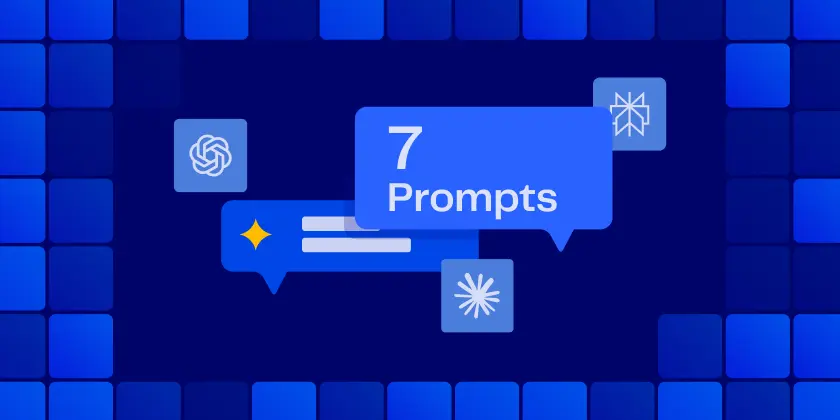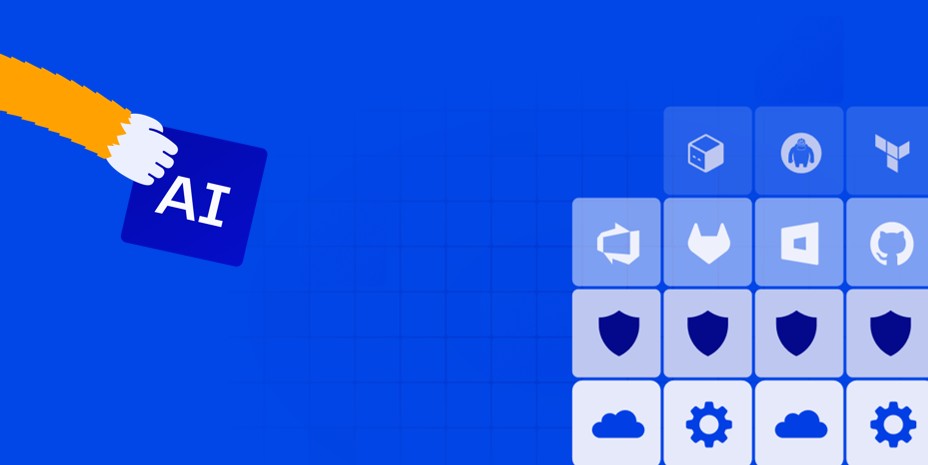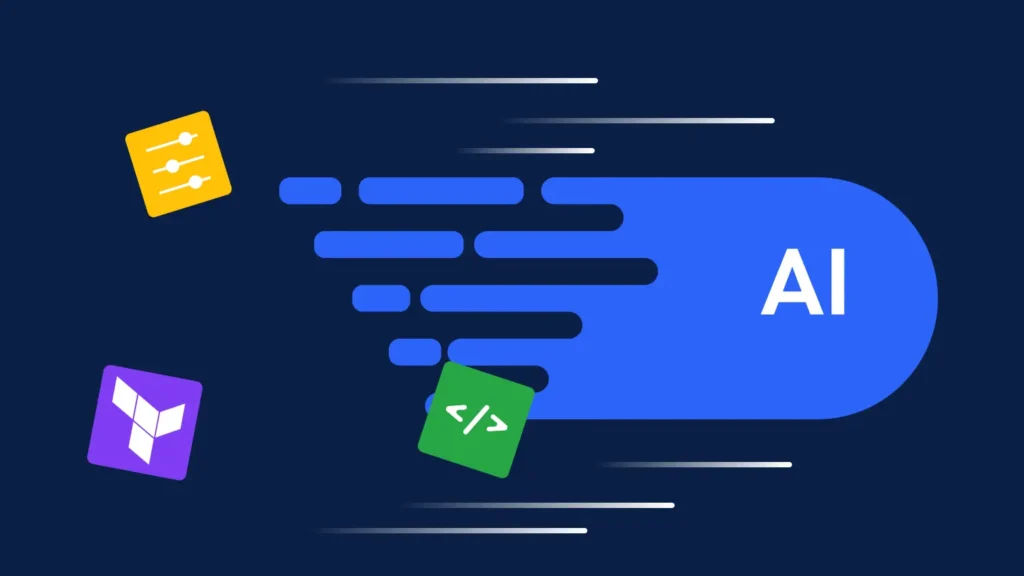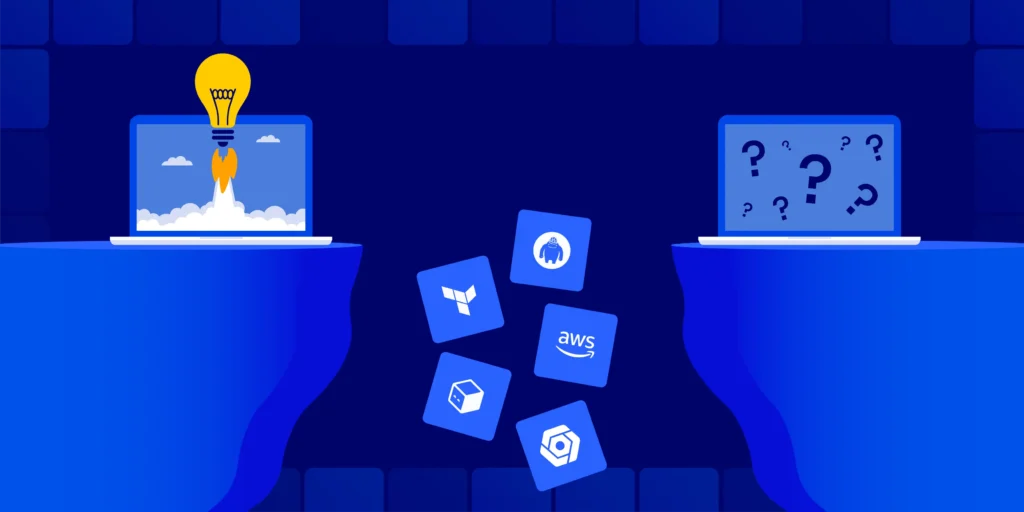For years, Terraform has been the backbone of Infrastructure as Code. Now, with AI entering the workflow, engineers no longer need to spend hours troubleshooting syntax, writing repetitive modules, or combing through verbose plan outputs. Terraform AI brings the same AI coding revolution that developers already enjoy in their editors directly into the world of cloud infrastructure.
AI coding assistants can now generate Terraform code, run CLI commands, and verify provisioned infrastructure for debugging. For example, an AI agent can pull from the latest Terraform documentation, run terraform validate to check syntax, preview changes with terraform plan, and apply them with terraform apply. It can then connect through AWS CLI or an MCP server to confirm resource status.
The real power is iteration speed. AI assistants can loop through writing, testing, logging, and verifying far faster than humans, accelerating both development and debugging.
LLMs and AI for Terraform in IDEs & CLI
LLM copilots are no longer confined to a browser tab; they sit directly inside the tools you already use every day. Here are few that I recommend:
GitHub Copilot & Amazon CodeWhisperer for Terraform
Autocomplete HCL, Bash, and Go tests. Suggest variable names, generate resource blocks, and explain errors inline. 🔗 GitHub Copilot | Amazon CodeWhisperer
Cursor AI & Continue in VS Code / JetBrains
One-shot refactors: “extract these CIDRs into variables”, “convert count loops to for_each”. Highlight hard-coded values as you type. 🔗 Cursor AI | Continue.dev
OpenAI Chat in Editors
Chat about the current file or diff, ask “why is this plan destroying prod?” and get an instant summary without leaving the editor.h 🔗 OpenAI
Natural-Language CLI Wrappers for Terraform
Tools like Warp AI or custom scripts let you type “add S3 bucket encryption” and receive the exact AWS, Terraform, or kubectl command. 🔗 Warp AI
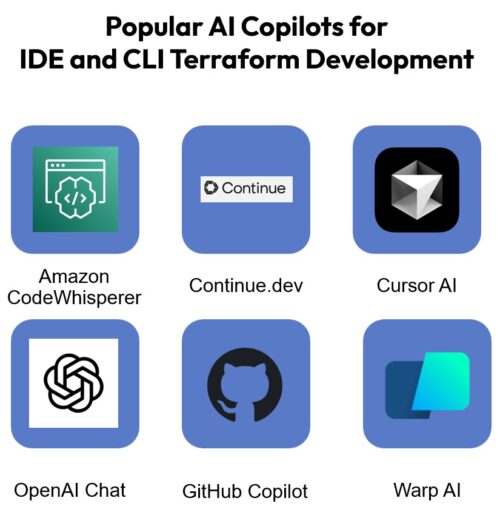
However, to maximize your effectiveness with an AI assistant for Terraform workflows, it’s crucial to know how to write effective prompts with the right context. The best way to begin is by using the following AI prompts. These prompts work with AI assistance such as Cursor AI and GitHub Copilot.
Prompt 1 · Convert Magic Numbers into Terraform Variables with AI
One of the common mistakes developers make is to use hard-coded values in their code. In the context of Terraform, it can be a simple CIDR block, AMI ID, or instance size defined directly in code without using variables.
After writing any TF code, you can run the following prompt in your AI coding Assistance to convert any hard-coded values into tfvars .
Prompt
# Highlight every hard-coded CIDR, AMI, or
instance size and convert it to a variable.
# Add sensible defaults in variables.tf and
environment-specific values in dev.tfvars and prod.tfvars.
# Then run: terraform validateWhy it matters
Hard‑coding introduces fragility. By extracting values into variables, you turn implicit assumptions into explicit contracts. Setting defaults forces you to think carefully about what “normal” should look like, and grouping environment‑specific overrides into *.tfvars files avoid scattering values across code.
- Promotes reusability by letting modules adapt to multiple environments.
- Lowers the chance of accidentally rebuilding resources when updating values.
- Catches wiring mistakes early through terraform validate.
Prompt 2 · Use AI to Tag or Label Terraform Resources
Most of the time, you want to tag (in AWS) or label (in GCP/Azure) your resources so that you can later analyze costs or filter resources for debugging the infrastructure. Forgetting this step may make it difficult to isolate resources and resource groups for faster debugging. Following the prompt can automate the adding of Tags or Labels.
Prompt
# Scan this folder and list any resource that lacks a tags block (AWS) or labels block (GCP/Azure).
# Show the file and line number, and generate a patch snippet for each offender.Why it matters
Tagging is super important for FinOps, compliance, and automation to run smoothly. When resources aren’t tagged, they disappear from cost reports, leave gaps in governance, and mess up cleanup automation. A fast local audit lets you check that every new resource meets tagging rules before you merge them in.
- Improves visibility in billing dashboards.
- Enforces compliance rules tied to tags.
- Enables automated lifecycle management of resources.
Prompt 3 · AI Validation of Destructive Terraform Code Changes
When your IaC becomes complex, spotting destructive changes from terraform plan can be hard. This is where AI coding assistance becomes really useful. You can use the following prompt for AI to identify them for you.
Prompt
# Given this Terraform plan output (preferably terraform show -json plan.tfplan):
# - List every resource marked for destruction or replacement (- and -/+, or delete actions).
# - Explain the cause for each.
# - Suggest safer alternatives:
# - terraform apply -replace=RESOURCE_ADDR
# - lifecycle { create_before_destroy = true }
# - lifecycle { prevent_destroy = true }Why it matters
Highlighting destructive changes prevents accidental deletions. Lifecycle settings like prevent_destroy add safeguards, while summaries keep reviewers focuse.
- Prevents outages caused by missed deletions.
- Encourages safer alternatives like taint and recreate.
- Improves clarity for human reviewers.
More about GenAI and Iac
-
Why AI forces DevOps to be Faster →
Point of view on how DevOps Teams will match the speed of AI
-
2025 Gen AI Readiness Report: →
We asked 300 Cloud Leaders about how GenAI Shaping 2026
-
Product Showdown →
We will showcase AI-Powered Terraform Code Generator
Prompt 4 · AI-Powered Drift Detection with Remote State
Drift happens when the deployed infrastructure differs from Terraform’s state, often due to manual cloud console changes, autoscaling configuration edits, or external tools. Terraform can detect drift automatically during terraform plan, because it refreshes the state by querying the real infrastructure and compares that against your configuration.
You can use the following AI prompt to help interpret drift in the plan output:
Prompt
# Given this terraform plan output (ideally JSON via terraform show -json plan.tfplan):
# - Highlight resources where current infra differs from desired config.
# - Categorize drift: console change, autoscaling-related, or unknown.
# - Suggest remediation for each category:
# - Console change → import, update in Terraform, or revert.
# - Autoscaling → confirm if scaling is managed outside Terraform.
# - Unknown → investigate manually before applying.Why it matters
Unchecked drift undermines reproducibility and can lead to surprises in production. Detecting drift early enables engineers to import resources, adjust autoscaling policies, or revert unauthorised changes.
Prompt 5 · AI Summaries for Terraform Plan Outputs
Terraform plan output is verbose and intimidating for developers unfamiliar with IaC. You can copy-paste the terraform plan output, or for more reliable parsing, generate structured JSON using:
terraform plan -out=plan.tfplanterraform show -json plan.tfplan
Then, provide it to your AI agent with the following prompt to make the output more developer-friendly:
Prompt
# You are an expert DevOps engineer.
# Given the output of a Terraform plan:
# - Explain it to a developer unfamiliar with IaC.
# - If Terraform fails before a plan, explain the error and stop.
# - Otherwise, list which resources are affected and
what actions will occur (create, update, destroy).
# - Keep the explanation concise and human-readable.
Why it matters
Human-friendly summaries make plan reviews accessible to a wider audience. This builds trust and collaboration across teams, especially when non-IaC engineers need to understand the impact of changes.
- Improves cross-team communication.
- Helps identify issues early.
- Builds confidence in infrastructure changes.
Prompt 6 · Security & Compliance Checks for Terraform
Misconfigured infrastructure is a top cause of cloud breaches. IaC scanning tools like Checkov, tfsec, and Terrascan statically analyze Terraform code to detect common vulnerabilities and compliance violations.
Prompt
# Scan these Terraform configurations for security risks:
# - Overly permissive security groups (0.0.0.0/0 ingress).
# - IAM policies with overly broad "*" wildcards.
# - Storage buckets without encryption.
# Suggest secure alternatives.
# Where possible, generate OPA (Rego) policies to enforce these rules.
Why it matters
Shifting security left ensures vulnerabilities are caught during development rather than after deployment. Automated scanners provide consistent, fast, and comprehensive coverage, while policy‑as‑code enforces organisational rules automatically.
- Detects misconfigurations like public S3 buckets or wildcard IAM policies.
- Automates compliance with built‑in security policies.
- Reduces the likelihood of costly cloud breaches.
Prompt 7 · AI-Powered Dependency & Version Drift Control
Terraform providers and modules evolve quickly, and unpinned versions can introduce breaking changes creating Drift.
Prompt to help:
# Audit this Terraform project for:
# - Outdated provider versions.
# - Modules pinned to "latest" or missing explicit version constraints.
# - Deprecated resources or attributes.
# For each outdated dependency:
# - Propose a safe upgrade path.
# - Update the version constraints.
Why it matters
When your app’s libraries change without you planning it, things can break. Pin the versions so you can always rebuild the same working app, then make small, planned updates and check them regularly to avoid one big, painful upgrade later.
Terraform AI in Action: Putting It All Together
Individual prompts are powerful on their own, but they become game‑changing when you and your team can use them over and over again. One approach to do that is to create documentation or AI assistance specific rule sets (e.g, Cursor AI Rules), that is stored along with your code.
For prompts that are used for validation, they can also be run automatically inside your editor and in your CI/CD pipelines as a quality gate to detect issues at the earliest.

